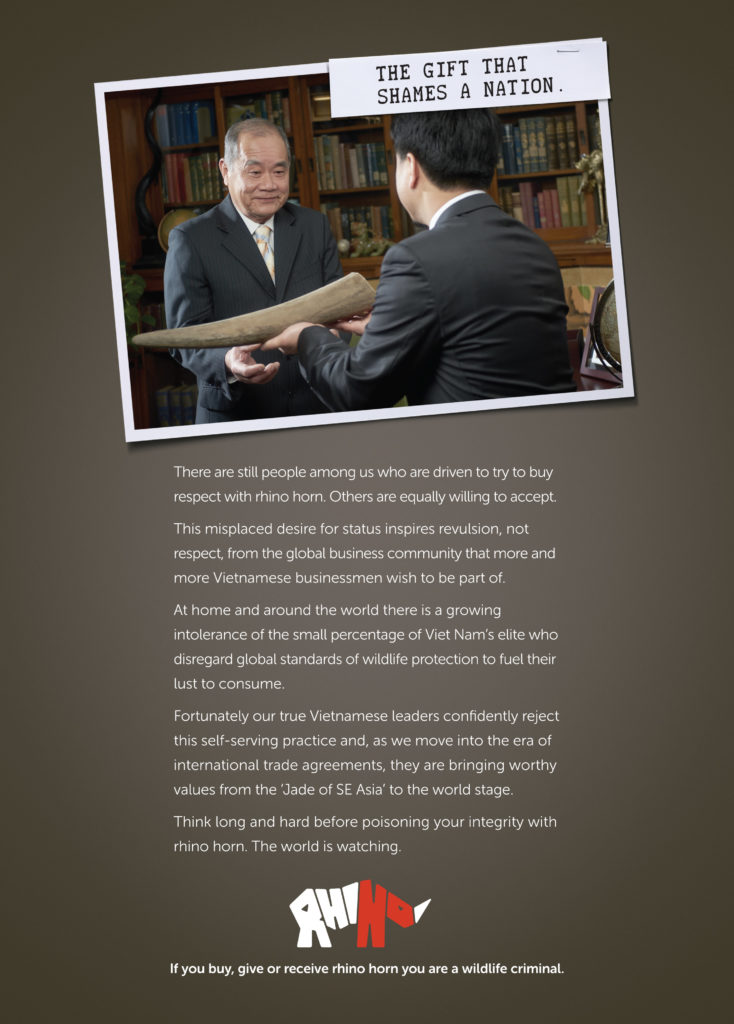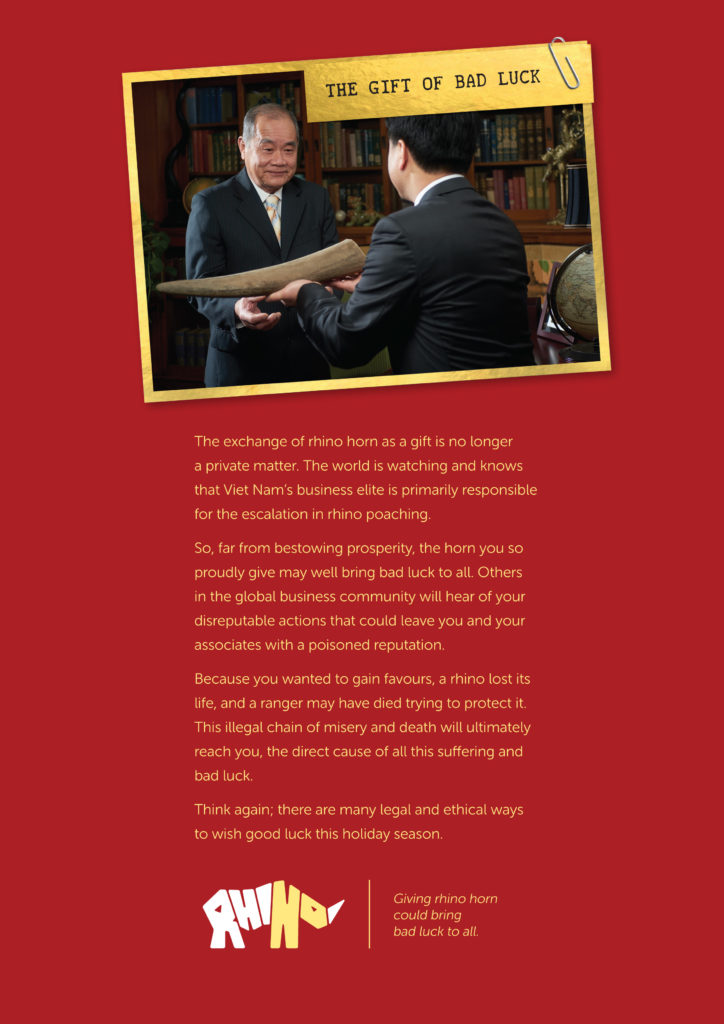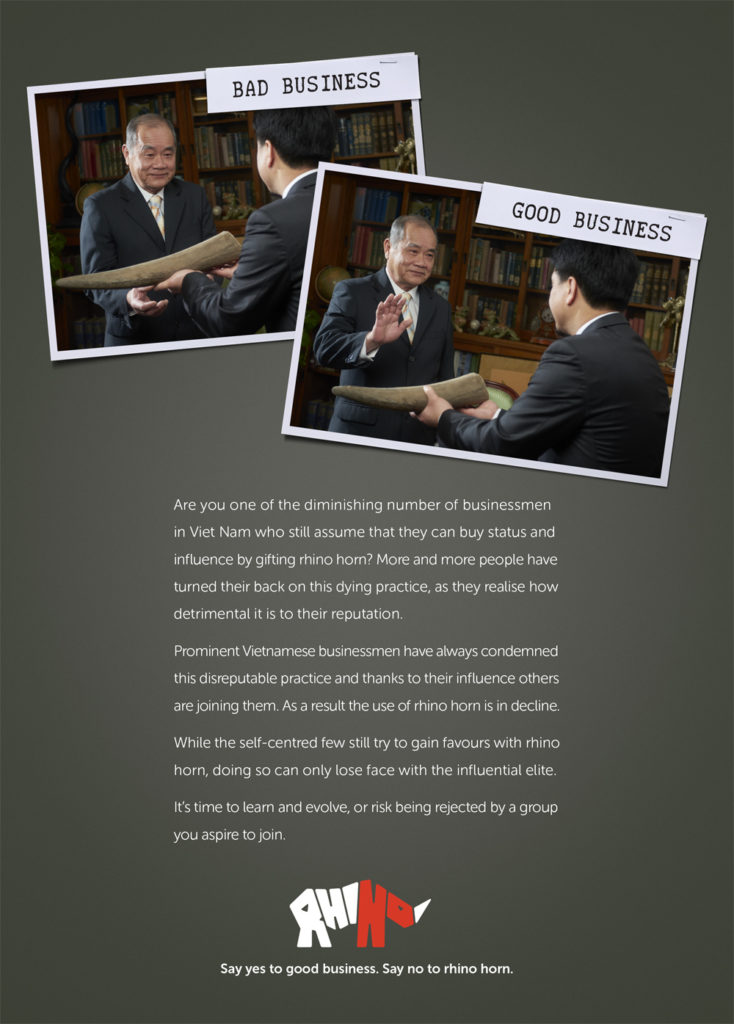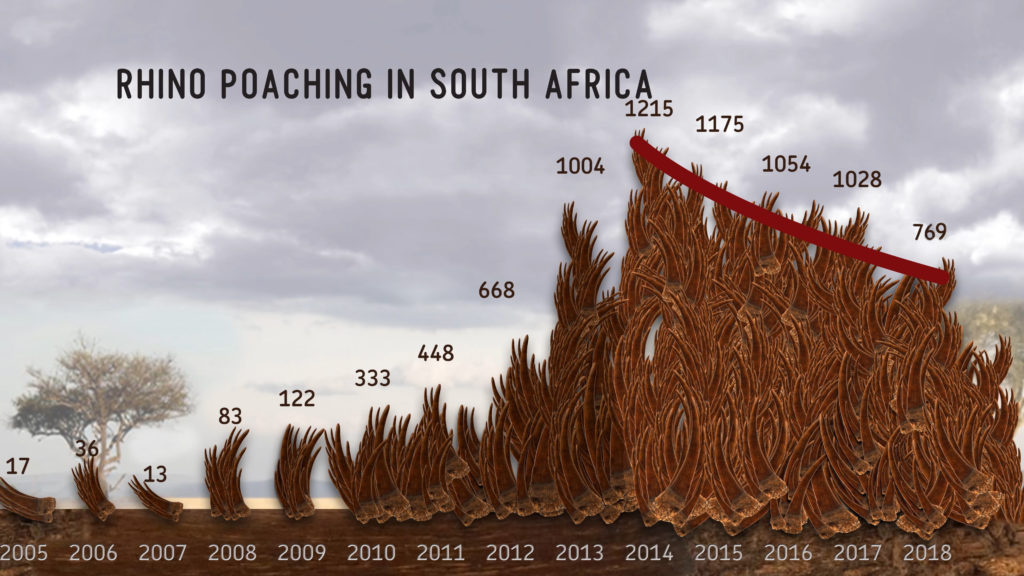“Human behavior flows from three main sources: desire, emotion, and knowledge.”
Plato
The demand for illegal and endangered wildlife needs an ever greater focus. Some animals have become so valuable for their parts that the cost of their 24/7 security is becoming prohibitive. While these security measures are needed, the only way to decisively close down the markets for wildlife is to change peoples consuming behavior. Active for Animals work addresses people’s desire for wildlife, with our key focus being to collapse the demand for rhino horn driving the current rhino poaching crisis.
While our campaigns incorporate awareness-raising and education, these types of campaigns take longer to achieve results and are often more focused on generational behaviour change. In such instances where time is limited, because the scale of poaching is driving species to the brink of extinction in the wild, highly targeted demand reduction campaigns are needed. These campaigns are designed to trigger behaviour changes in the consumers driving the current demand and resulting poaching.
There are a number of steps to follow when designing a demand reduction campaign to tackle wildlife consumption. In summary, these steps are:
- Identify the user groups for each of the different products or different uses
- Find out the true motivations to use the products
- Summarise the patterns
- Derive potential reasons to stop using and calibrate with target group(s)
- Identify the most effective communication channels
- Design campaign messages and test
To understand more about how these campaigns are created, check out How to Create A Demand Reduction Campaign.

While education and awareness raising can be broad and appeal to the community, when immediate behavior change is needed then the focus should be on the actual users of these illegal/endangered products.
Our key focus and fundraising is to expand a greater roll out of demand reduction campaigns. But we also develop awareness-raising campaigns such as our One Small Step campaign, designed to provide simple, quick and effective activities for people who want to be more active for wildlife but aren’t quite sure where to start.
The awareness-raising and education campaigns are important because too few people are taking notice of the extinction crisis, or understand the implications of the situation, and we need your help to change that. For example Charity Navigator shows only 3% of non-government donations go to the environment & animals, this category listing a total of 1009 charities. Of these 1009 only 108 are categorized as Wildlife Conservation, which are defined as “charities include fish, wildlife and bird refuges and sanctuaries, as well as groups researching wildlife protection and conservation around the world.”
But Active for Animals primary focus is demand reduction, and in the first instance supporting and designing campaigns targeting the primary users of rhino horn in Vietnam.
In recent years, Active for Animals founder, James Dunton, has personally raised funds for Nature Needs More’s RhiNo demand reduction campaigns, which have been running in Vietnam since September 2014. The highly targeted campaigns focus on the motivations of the key rhino horn user group, wealthy men who use rhino horn to negotiate business deals and convey status. The campaigns use messages that will trigger an emotional response in this group, challenging their leadership ability, reputation and business acumen. If they have to use the ‘prop’ of rhino horn to negotiate a deal, then they must be mediocre businessmen and leaders.

Image: Courtesy of Nature Needs More

Image: Courtesy of Nature Needs More

Image: Courtesy of Nature Needs More

Image: Courtesy of Nature Needs More
Thankfully the rate of rhino poaching has slowed since it peaked in 2014, when 1,215 rhino were poached in South Africa alone. While the rate of poaching has slowed there is still much to do, with some predicting that rhinos could become extinct in the wild by 2030.
Rhino Poaching Rates South Africa (1990 to 2014)

Image: Courtesy of Nature Needs More
Since 2014, rhino poaching rates have decreased.

Image: Courtesy of Nature Needs More
Launching Active for Animals will not only mean we can create more of our own projects but it will also enable a greater collaboration with organizations such as Nature Needs More and others around the world, to scale up the commitment to demand reduction strategies and campaigns.
